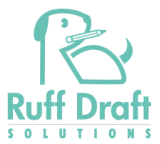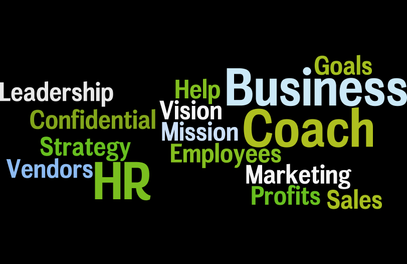|
Small businesses are often started based on someone's skill set, expertise, passion (e.g. web design, social media marketing, IT services, electrician, plumber, handyman, bookkeeping) or a new/improved product. Early on such businesses often succeed based on the sheer drive and determination of the founder(s).
As the business grows, more and more challenges appear on the horizon. These can encompass any number of business functions from selling to marketing the business, expense tracking, having to figure out when it's time to hire, creating job descriptions, etc. It is quite common that the business owner feels overwhelmed by having to juggle a lot of different priorities, especially those that are outside his or her expertise. Some of these challenges can be outsourced to virtual assistants, web site design and social media companies, accountants, etc. A lot of the higher level decision making remains though. That's when business owners often feel stuck. They feel overwhelmed. This is very common. Everyone needs help with something and an outside perspective can be just what is needed. If you relate this to sports, it is obvious that even the best athletes use coaches. In fact, it is usually the case that the best are at the "top of their game" precisely because they have a coach. Each football team that competes for the Super Bowl has multiple coaches (head coach, special teams, etc.). It's not that the players don't know the rules of the game or how to warm up and practice. After all, they have been playing for years to even be considered contenders for the Lombardi trophy. However, like the rest of us, they too need someone else to point out things that could be improved or someone to encourage them when they feel they can't do one more drill. OK, "encourage" may not be the right word in this context but you get the picture. It is also essential for groups of athletes to have coaches that help them "become a team". The same applies to businesses. Even leaders of Fortune 500 companies have coaches. Both Bill Gates of Microsoft and Eric Schmidt of Google advocate using business coaches to "improve their game". If you own a business or if you are in charge of a team at work, find out if coaching is right for you. Before you decide though, make sure you find the right coach for you. If you would like to find out if coaching is right for you and your business, contact Heike at [email protected] or call 410-980-5299 to set up a no-commitment, no-cost conversation. It's time to put the fun back in your business.
2 Comments
Small Businesses, like their mid-size and large counter parts, encounter changes in the market place and business challenges as they grow. These challenges can encompass a variety of areas from marketing to sales, industry or product expertise, importing to exporting and more. A growing number of consultants and business coaches are available across the USA and beyond to assist business owners and managers in dealing with these challenges.
A small business consultant is usually a subject-matter expert who is brought in to assess the situation. After looking at various angles and speaking with multiple people in the organization, the consultant usually provides a plan of action to improve the situation. In some cases the consultant may assist in the implementation of systems, etc. while in others their job is done after they provide the plan. Jon Denney, a fellow business coach and president of the Professional Business Coaching Alliance, explains business consulting as follows: "In traditional consulting, the consultant is hired to either fix a specific problem (IT consulting, for example) or to go through a business and identify problems and/or unmet opportunities and to provide their findings to the business owner." Jon also indicates that the consultant's purpose "is generally project-based and therefore, transactional in nature". Another type of consultant may actually be brought into a small to mid-size company on an on-going part time basis. This may happen if the company needs to fill an upper level management position, e.g. CFO, but doesn't have the need or budget for a full-time person. In cases like this a small business may turn to an outsource CFO service or similar option for other functions (engineering, marketing etc.). With such an arrangement the business consultant may work on premises a few hours or days per week or per month, though off site arrangements are also an option. In short, a consultant for small or mid-sized businesses will often be "the expert" on a particular topic and either provide expert services or recommendations for improvement for a limited period of time. A small business consultant has a different function than a small business coach. For more information about Business Coaching see the blog posts archived in October 2013.  When I first met Heike I had just started my marketing business, Ruff Draft Solutions. She delivered a wonderful presentation on the value of networking and LinkedIn while guest speaking at Annapolis Rotaract Club in April 2014. I followed up with her that evening and she shared a number of resources, including SCORE, LinkAnnapolis, The Small Business Administration and Meetup.com. After meeting with Heike for a free consultation, I knew committing to her business coaching would be an invaluable investment in order to grow my business. Heike helped me prioritize and establish short and long-term goals to keep me focused and motivated each week. When starting a new businesses, you feel as though you need to wear many hats – be the sales and marketing team as well as the secretary, accountant, IT provider and then actually get some work done for your clients. Heike does a great job with establishing how to effectively implement block scheduling to balance all tasks to have productive days. She even provided me tips on how to stay motivated by regularly recording a list of accomplishments to review on the days when nothing seems to be going my way. Heike provides wonderful advice on how to be more efficient using technology. She suggested that I take advantage of a CRM system to better manage leads and current clients, helped me establish an effective system to organize business cards using Evernote and how to properly send e-mail follow ups after networking events. I attended Heike’s LinkedIn seminar that provided detailed statistics, tips and tricks, dos and don’ts and how to design your profile to set you apart from the competition. After applying what I learned, Heike spent a coaching session with me reviewing my LinkedIn page in depth, providing individualized suggestions and improvements. I really appreciate Heike’s ability to be reached and her prompt e-mail responses to the variety of questions I had outside of our coaching sessions. She helped restore my confidence to approach and land large-scale clientele and corporations, how to handle companies that are not a good fit for me and whether to pursue employment at marketing firms versus freelancing. Heike also provided me many helpful documents to prepare for our sessions, including a vision statement, mission statement and business plan. With Heike’s passion to see her clients succeed combined with her business expertise, I highly recommend individuals and businesses to pursue her coaching services to reach their full potential. This blog post was written by Jenna Soneira, Owner of Ruff Draft Solutions. This post is based on a personal experience.
I found a charge on my latest credit card statement that I didn't make and called the card company to request having it removed. This resulted in a 54 minute odyssey through three departments and well over 30 minutes on hold. Aggravating factors:
If this company was focused on customer service, they could have made this a much better experience by:
If a brief time on hold was truly necessary:
With the right training and authorization in place, this call could have been handled in a matter of 5 minutes and could have made me a more loyal customer. Instead it took almost 55 and has me looking for other options. Does your company treat their customers like unwelcome interruptions or make the process of filing a claim easy?  How you answer a call may be the first - and last - impression you make on a potential customer. There is the dreaded automated phone system that asks a caller to enter anything from an extension to an annoying litany of numbers (account number, zip code, department, etc.). What really irks me about the latter is that, once a live person actually answers the phone, you usually have to repeat part or all of these numbers. How incredibly annoying. This particular post though is about how you answer your phone when you actually pick up a call. In my opinion it is a business requirement to answer at a minimum with your full name or business name, preferably both. I would suggest answering slowly enough so the caller can actually understand what you are saying. Enunciate! I would also suggest adding a "Good Morning" or "How may I help you?" or some other friendly greeting. Last but not least, SMILE when you answer the phone. I can't tell you how often I call owners of small businesses or sales people that make we want to hang up immediately because they answer with nothing but "Hello" in a tone of voice that sounds like I just interrupted their Thanksgiving Dinner with a request to take out the trash. Really? Your phone is an essential part of your business. Make a caller feel appreciated. This applies to sales reps as well. If you share your phone number for business reasons by means of a business card, letterhead, your LinkedIn profile or elsewhere, answering simply with "Hello" is not enough. Consider how you answer the phone to be an important part of your marketing . It's cheap too! Putting a smile on and answering with complete information will make you stand out from your competition, especially when you compete with other small businesses. Feel free to share your feelings about this topic or how you answer the phone in the comments section. Unlike traditional business consultants, business coaches don’t fix problems for their clients and then go away. Instead, a business coach helps guide business owners into determining their own solutions to their problems. The coach guides the client in putting strategic plans in place which will solve the problems or capitalize on new opportunities. The coach facilitates creative and strategic brainstorming. The coach then helps to facilitate the creation of tactical “action steps” that the client or client company will take to implement the strategy. Once the action steps are committed to, a good coach provides a structured environment where the client is accountable to him or herself for executing the plans.
A business coach is very much like a coach you may have had in sports, music, or the arts. If you’ve had a coach before, you know what a coach does. Coaches encourage, challenge and teach. They also provide structure and accountability to the people they coach. Coaches reinforce positive advancement and bring people back to the fundamentals when needed. They push the people they coach to reach their full potential. Coaches can give a hug or give a kick and they know when to do which! A good coach leads by example and is inspiring to those around him/her. Yes, a coach is a role model. Business coaching is absolutely an art and a science. Professional business coaches have to know themselves, know other people, and they must know business! Much of what a business coach does comes naturally, but there are also many important techniques and skills they need to master in order to provide excellence to their clients. Business coaching is a booming industry for one simple reason: Professional business coaching works. The ultimate responsibility of a business coach is to provide a “safe place” to guide and support his or her clients in reaching the clients’ stated objectives. The term “safe place” is critically important to this definition and should be clarified in more detail since the meaning of this term is not necessarily self-evident.
The term “safe place” refers to a positive, supportive environment that is free from judgment or hidden agendas. There are also no self-imposed (or “coach imposed”) limitations on what is possible. In this safe environment, the client is free to speak openly and honestly, knowing that anything discussed will be held in complete confidence. If “providing a safe place” doesn’t seem significant, just think of this: Business owners (and leaders) are people. They are wives, husbands, mothers, fathers, daughters and sons. Many business owners have employees, who also have families. They have vendors. They have clients. They may have shareholders or partners. They have bankers, accountants, and lawyers. And these are the people that business owners usually talk to and get advice from (solicited and unsolicited). The problem is that, due to the nature of those relationships, there are often “hidden agendas” that are represented in the advice from these different constituencies. This is not unfair; it’s just the way it is. Everyone has needs and wants and our opinions or advice may be tainted by having our own ends in mind. To be sure, people don’t do this to be insensitive or manipulative. It’s just human nature. However, when a person hires a business coach, the coach represents the self-interests of just one person: The client. There are absolutely no hidden agendas – ever. Another thing our loved ones tend to do is to “protect us”. People don’t want to see their loved ones get hurt and therefore try to protect them from “failure”. They may try to minimize the risk of failing by sharing their own beliefs. This may result in the business owner adopting those beliefs of what can and cannot be done. Imagine how many people lived and died without ever going after their dreams due to a loved one projecting self-limiting beliefs. The fact is people constantly project their own ideas, opinions, thoughts, agendas, and even fears onto other people. That is normal and precisely why it is so essential to have a place that is “safe” from all that noise. That safe place is with a business coach. The second distinct area where a business coach can help is when the client knows what he or she should be doing, but isn’t doing it - or – when the client is knowingly doing something he or she should not be doing but continues to do it anyway. This is what we call “personal effectiveness.”
Many personal effectiveness issues stem from bad habits and addictions. Others actually stem from personal strengths that are overused to the extent that they turn into weaknesses. For example, think of how strong a bull is… That’s not an asset when you put him in a china shop! Personal effectiveness starts with knowing yourself and knowing your own personal vision and goals. Then it moves to how you interact with other people of all personality and behavioral types. Ultimately, personal effectiveness is about behavior that is congruent with values. It is about being mentally, physically, emotionally, and spiritually healthy. Considering all the pressures in our world, it is very difficult to maintain personal effectiveness without paying ongoing, deliberate attention to it. A business coach provides the structure and knowledge necessary to help people maximize their own personal effectiveness. Check back for upcoming posts on A Safe Place and The Difference Between Coaching and Consulting. Business coaches help business owners (or business leaders) in business effectiveness and personal effectiveness.
Business coaches work with business owners and business executives in two distinct areas. First, they help business owners who don’t know what to do in a particular area of his or her business. We call this “business effectiveness.” All areas of business effectiveness fall into the broader categories of Marketing, Sales, Customer Service, Leadership Development, Human Resources, Systems Implementation, Strategic Planning, Financial Management, and Exit Planning / Succession Planning. Business coaches work with successful people who are “stuck” in certain areas of their business. These areas can be related to low profits, sluggish sales, cash flow challenges, people problems, or working too many hours, which can result in an unhealthy work-life balance. Other common challenges include service failures, quality issues, lack of leadership depth, a poor company culture and limited company value. Some of these problems make a business owner feel paralyzed. They are filled with concern, stress, frustration, anger, grief and doubt. These negative emotions compound the challenges business owners face and can create new problems of their own - some at work, others at home. A professional business coach helps get the client out of the proverbial trees so the owner can work strategically on business development and systematically solve these problems. Over time, this results in better cash flow, higher profits, and a happier workplace, which in turn leads to a healthy, productive, and joyful life. Be sure to read upcoming posts on Personal Effectiveness, A Safe Place and The Difference Between Coaching and Consulting. A picture for your LinkedIn profile should reflect a professional image. What does that mean?
That does not mean the picture has to be taken by a professional photographer. What I mean is that the picture should show you in professional attire, something you would wear to a networking event or to a job interview. The picture should be a close up of your face, a so-called "head shot", that allows someone who has met you at a networking event to recognize you on line -- or vice versa: if they have seen your LinkedIn picture they should be able to find you at a networking event without having to peer at everyone's name tag. Don't hide your face behind sunglasses and a hat or by showing only your side profile. Also keep in mind that your LinkedIn profile represents YOU. Therefore make sure only you are actually in the picture, not you and your spouse, you and party guests or you and your entire wedding party. LinkedIn is not facebook. Therefore avoid pictures showing you engaged in a hobby, like holding up a big fish or being a small figure on an expansive ski slope. Reserve company logos for your LinkedIn business page. If you are an owner of a small business you can set up a company page on LinkedIn free of charge. Just like on facebook, this should be a separate page from your personal page. So don't hide behind a logo on your personal profile. The most important thing, though, regardless of all of the above: SMILE! Look at other people's pictures and notice how much more you are drawn to those pictures of people smiling rather than those with a serious face. Being approachable is half the battle. Do you agree or disagree with the above points? Share your feedback in the comments. |
AuthorHeike Heemann, LinkedIn and career coach, brings over 20 years of business experience to her blog. Archives
January 2019
Categories
All
|




 RSS Feed
RSS Feed